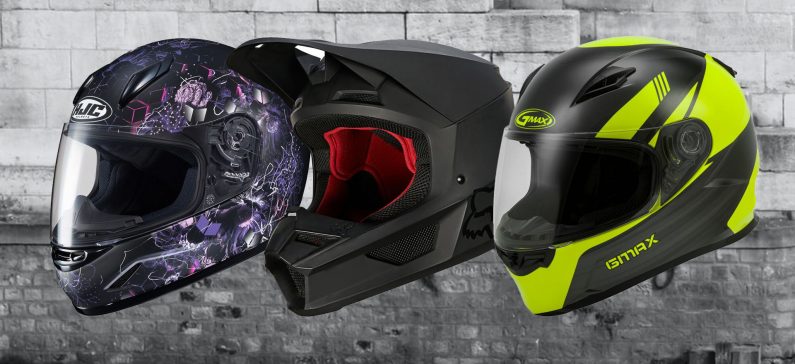Motorcycle helmets are more than just fashionable accessories for riders; they are critical pieces of safety gear that protect against head injuries. We delve into the fascinating world of motorcycle helmet technology. From the historical evolution of helmets to the latest innovations, we will explore the materials, certifications, and advanced features that make modern motorcycle helmets highly effective in safeguarding riders.
Impact of Materials on Helmet Safety
The materials used in motorcycle helmet construction play a crucial role in protecting riders. The different materials commonly used, such as polycarbonate, fiberglass, and carbon fiber. Each material offers unique properties, including impact resistance, strength, and weight. Understanding these materials helps riders make informed decisions when choosing helmets based on their specific needs.
Polycarbonate
Polycarbonate is a lightweight and durable thermoplastic commonly used in motorcycle helmets. It offers excellent impact resistance, making it ideal for protecting against minor to moderate impacts. Polycarbonate helmets are often more affordable compared to helmets made from other materials, making them a popular choice among riders.
Fiberglass
Fiberglass is a composite material made of fine glass fibers embedded in a resin matrix. It is renowned for its strength and impact resistance. Fiberglass helmets strike a balance between weight, rigidity, and cost. They provide a high level of protection and are often used in performance-oriented helmets.
Carbon Fiber
Carbon fiber is a lightweight and exceptionally strong material made from thin strands of carbon tightly woven together. It offers outstanding impact resistance while reducing overall helmet weight. Carbon fiber helmets are favored by riders seeking maximum protection without compromising on comfort. However, they tend to be more expensive due to the cost of the material.

Composite Blends
Many motorcycle helmets utilize a combination of materials to optimize their performance. These blends often consist of fiberglass, carbon fiber, and Kevlar. By strategically layering different materials, manufacturers can create helmets that offer a balance of strength, impact absorption, and weight.
Expanded Polystyrene (EPS) Foam
While not technically a material used in the helmet shell, EPS foam is a critical component of modern motorcycle helmets. It is used as the inner lining and is designed to absorb and distribute impact energy. EPS foam is lightweight and has excellent shock-absorbing properties, making it effective in reducing the force transmitted to the rider’s head during a collision.
Advanced Helmet Technologies
In recent years, advancements in technology have revolutionized the world of motorcycle helmets, enhancing both safety and comfort for riders. From cutting-edge impact protection systems to integrated communication features, modern helmets offer a range of advanced technologies. Let’s explore some of these innovations and how they contribute to the overall riding experience.
Noise Reduction
Advanced noise cancellation technologies are commonly found in higher-end helmets, there are options available for riders on a budget. These helmets utilize features such as aerodynamic designs, well-sealed visors, and enhanced padding to minimize wind noise. For riders in search of the quietest motorcycle helmet under $200, it is important to look for helmets that have received positive reviews regarding noise reduction from users and expert reviewers alike. By prioritizing noise cancellation alongside safety considerations, riders can find a helmet that offers both protection and a peaceful journey on the road.

MIPS (Multi-directional Impact Protection System)
MIPS is a revolutionary technology designed to reduce rotational forces during impact. It consists of a low-friction layer within the helmet that allows a slight rotational movement upon impact. This movement helps to redirect and absorb rotational forces, reducing the risk of brain injuries. MIPS-equipped helmets have gained popularity for their ability to provide an extra layer of protection in real-world accident scenarios.
Integrated Communication Systems
Communication systems integrated into helmets have transformed the way riders stay connected on the road. Some helmets feature built-in Bluetooth technology, allowing riders to wirelessly connect with their smartphones, GPS devices, or fellow riders. These systems enable hands-free phone calls, music streaming, and turn-by-turn navigation, enhancing convenience and safety during rides.

